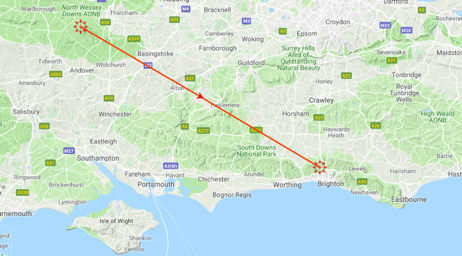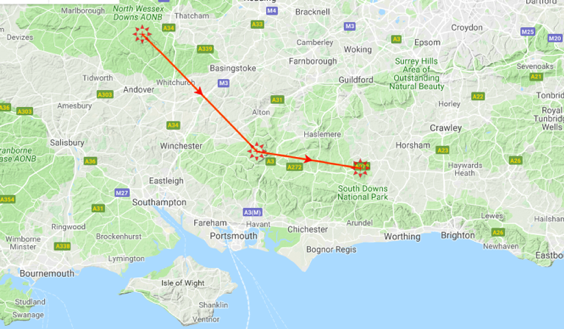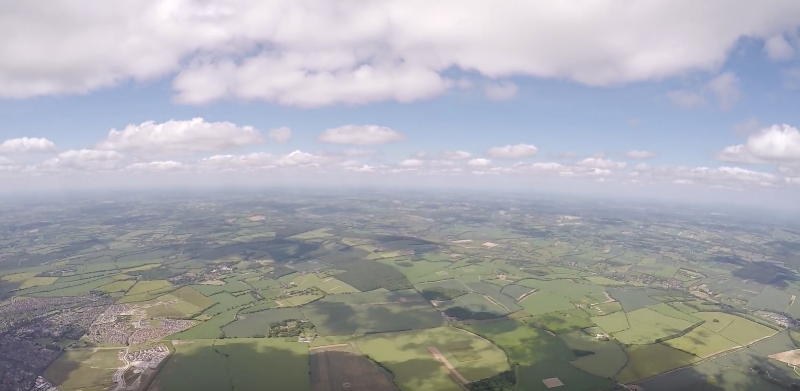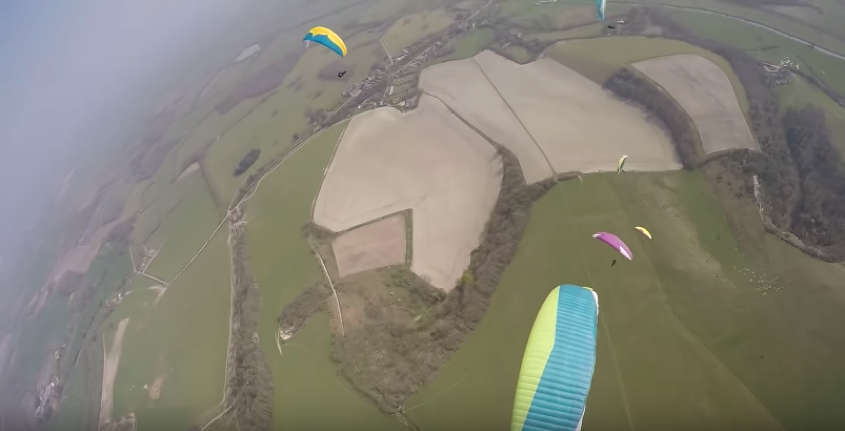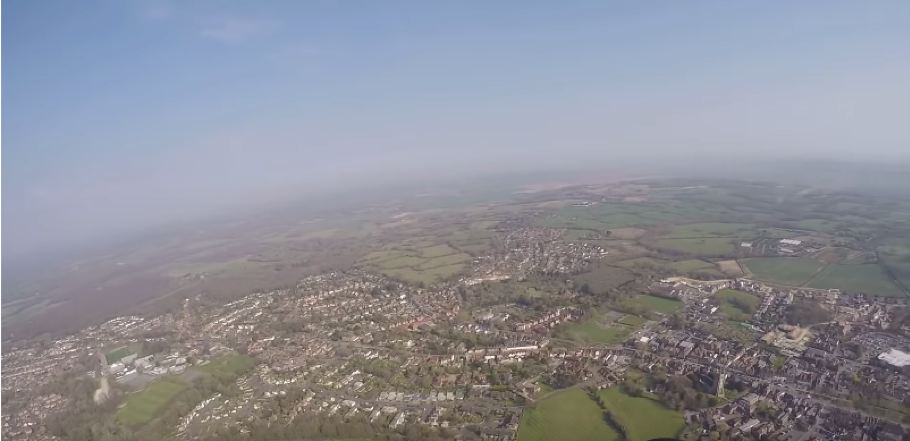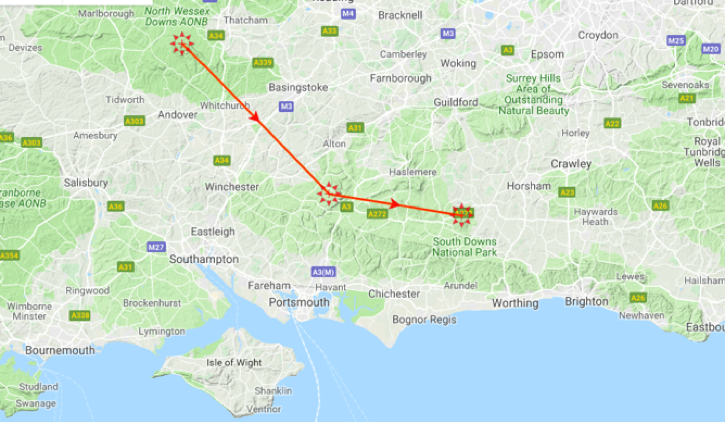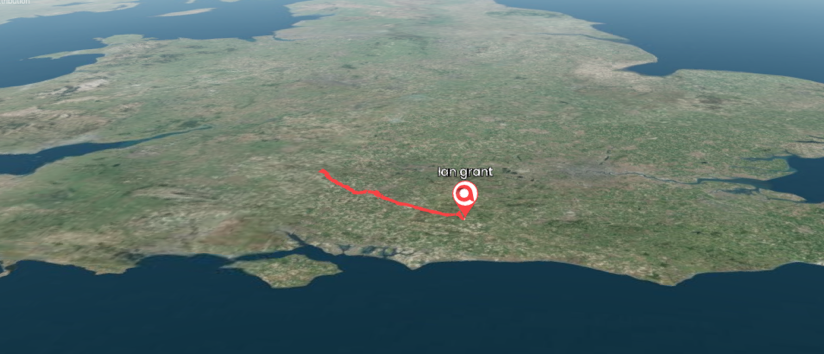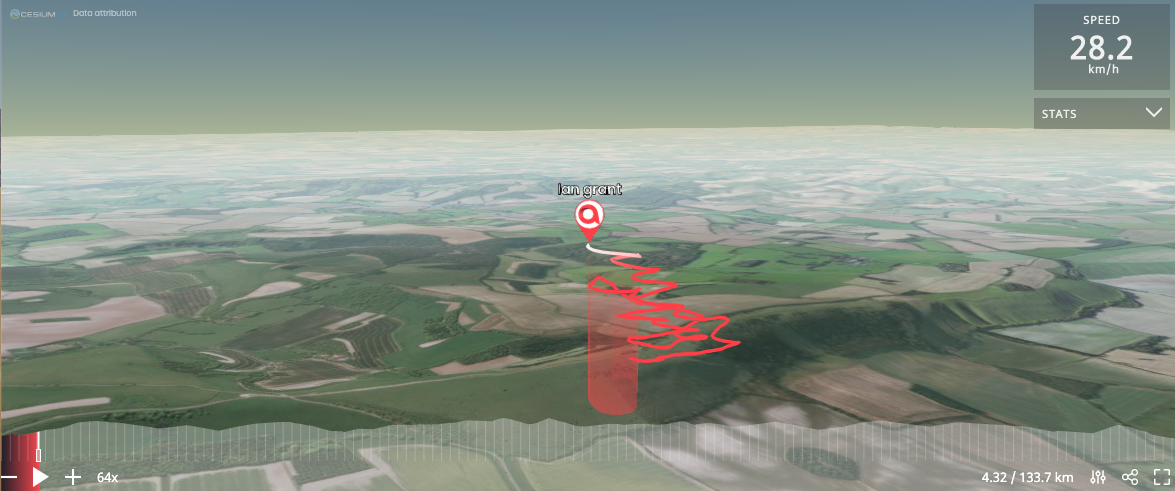Combe 75km cross country flight
Chasing the paragliding 100km club in the UK
When I’m not tandem flying with Mile High Paragliding in Sussex I am always trying to fly cross country and beat my personal best distance. The distance of a cross country flight is measured as the straight line from where you launch from to where you land and my current goal is a 100+ kilometre flight in the UK. Paragliders are reliant on thermal activity to cover large distances by repeatedly finding rising airmasses, climbing in them to cloudbase, and then gliding downwind to the next climb. Flying in England is very challenging because of our very changeable weather; most of our XC flights are done across flat land rather than large mountain ranges. Also, we have the busiest airspace in the world, meaning we have to be careful to avoid other air traffic!
I love to fly cross country because I have had the most amazing flying experiences, I get to fly at the most beautiful flying sites, meet lots of new people, and when it works the flying can be extremely rewarding. My most recent attempt to crack the 100km flight was from Combe Gibbet and my target was to fly to the Sussex paragliding site of Devils Dyke some 105km away in a straight line.
The picture above was my original flight plan and the picture below is the required flight plan to avoid flying into restricted airspace. This change in flight path meant that it would take a minimum of 5 hours to complete the flight and would require travelling over 120km to get my straight line distance of 100km.
I started early by leaving a car at Devil's Dyke at 6am and then driving on to Combe Gibbet for 9am to start flying by 10am. All the forecasts suggested I needed to leave Combe Gibbet at about 11am if I was to make it to my goal. My plan was to climb to cloudbase above Combe Gibbet and head South East towards the coast before turning East along the South Downs, heading to Devil's Dyke. I arrived a little late due to traffic and had missed a small group who have already left the hill, so I got myself into the air as soon as possible and found that I was waiting for the next big thermal to roll through.
After about 20 minutes of patiently waiting, I was rewarded by an adrenaline filled climb to base followed by a gentle drift downwind with the cloud. After 1 hour of flying and a couple of transition glides South East, I found myself flying alone and low over a pig farm, wondering if this would be the end of my flight. Luckily, I managed to find a weak climb and hold onto it until it eventually developed into a reliable climb back up to a cloudbase at 1600m. That’s a Mile High above the ground and one of my personal flight goals when flying cross country.
Once at base, I could re-focus on the flight plan and start heading South East again. With a tail wind I can fly up to 55 kilometres per hour and I glided in a straight line for 10km, looking for the next climb. I repeated this process a number of times using multiple thermals to climb to base and then glide to cover more and more distance. During the flight, I was lucky enough to share the air space with fellow paragliders, sail planes, light aircraft, and military helicopters.
It is a crazy feeling being high above the ground, thermalling in tight circles with sail planes flying around me so close that I could wave to the pilots. In each climb I could see myself getting closer to the clouds, further away from the ground and to stay calm I reminded myself that this is what paragliding is all about. There is nothing else quite like the views of our beautiful country from over a mile high up in the air. It is humbling, exhilarating, and sometimes a little scary, but always extremely rewarding.
After 4 hours I could see the South coast, with Portsmouth on my right hand side. I was again lower than I wanted to be and was flying on my own. I could see a line of clouds that I thought would bring me East towards Devil's Dyke, so I took a risk and headed that way. In hindsight, I should have stayed with the weak climb I was in, not pushed on, and that was the mistake that ended my flight.
Shortly after leaving my last climb I found myself in the dreaded cold air of the sea breeze rolling in from the South coast, smothering the thermals in the area. After a couple of attempts to climb in rough air to give me the required altitude to get back to the warmer lifting air. I found myself very low, looking for a safe landing option. Luckily, the English countryside provides lots of options and I landed in a grass field close to the town of Northchapel, about 25km short of my goal. Within a couple of minutes of landing a local farmer arrived to check that I had landed safely, explaining he had been watching me from the village for the last half an hour. He was shocked and amazed to hear that I had taken off from so far away, saying he had no idea we could cover such distances.
It was a shame that my flight was over and I had not made my 100km goal but I was elated. I had made my best UK distance flight of 75km and had had an awesome flight, sharing the experience with a multitude of other pilots and aircraft. I had been in the air for almost 4 hours and was exhausted, so being on the ground was probably the best place to be. Luckily, it was only a short walk to the village and a cold drink to celebrate a good day's flying. A short while after that I was met by a couple of fellow pilots that had left Combe Gibbet with me earlier that morning. We drove back to Devil's Dyke to watch the sun set over the South Downs and relive our adventures.
